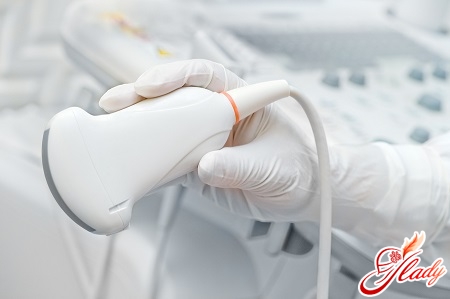 And so, the parents are happy to the point of madness - they havethere will be a child! No, there is nothing better than the feeling of joy from such good news! Now all that is left for the new mother to do is to upset herself less with all sorts of nonsense, eat right, develop a healthy daily routine and visit the necessary offices of everyone's favorite hospital on time.
And so, the parents are happy to the point of madness - they havethere will be a child! No, there is nothing better than the feeling of joy from such good news! Now all that is left for the new mother to do is to upset herself less with all sorts of nonsense, eat right, develop a healthy daily routine and visit the necessary offices of everyone's favorite hospital on time.
All would be well, if not for it ...
Everything seems to be fine, the fetus is developing steadily.and without excesses. The baby feels easy and comfortable in the amniotic fluid space of the intrauterine cavity, feels protected and enjoys the first beginnings of his life. But, difficulties during gestation do not always bypass happy mothers, presenting them with all sorts of unpleasant surprises, and most often under the name of "polyhydramnios during pregnancy". "Polyhydramnios during pregnancy" - such a diagnosis can be heard today by almost every fifth or fourth pregnant woman, however, only at different periods of gestation. Initially, nature created the most ideal conditions for the development and growth of the embryo, and then the fetus, in the womb of the mother during the trimester of pregnancy. Often, after the end of this period, all the vulnerable spots of the mother's health begin to show, which accordingly directly affects the fetus itself. Among such health problems of new mothers, one can encounter such as: cardiovascular diseases, Rhesus conflict, diabetes, development of intrauterine infections, etc. Each of these health problems is precisely the main reason why a pregnant woman hears the ominous diagnosis of "polyhydramnios".
Polyhydramnios during pregnancy is not a sentence!
Before taking emergency measuresprevention of harmful consequences of polyhydramnios, we recommend that you first familiarize yourself with the varieties of this diagnosis and the danger or safety of its consequences for the life of the fetus in certain cases. And so, the norms of the volume of fluid in the amniotic cavity are considered to be:
- in the first 10 weeks - 30 ml of liquid;
- at 14 weeks - up to 100 ml;
- period in the last months of pregnancy - from 1000 to 1500 ml.
- moderate polyhydramnios during pregnancy - 1500 - 1800 ml.
If the volume of amniotic fluid in the lastweeks of pregnancy exceeds the norm of 1500-2000 ml, then we are talking about excessive accumulation of amniotic fluid. In turn, acute and chronic stages are distinguished, which in turn are distributed into degrees - from mild and moderate to severe.
- The acute stage. Symptomatology
Acute polyhydramnios is determined in the early stagesgestation (at 16-24 weeks). In this case, there is a sharp increase in the volume and size of the abdomen, accompanied by pronounced painful sensations in the lumbar region and groin, noticeable swelling of the anterior abdominal wall and tension of the uterine walls. In acute polyhydramnios, symptoms may be observed in the form of severe shortness of breath in the mother with the slightest physical exertion, as well as difficulty listening to the fetal heartbeat.
- Chronic polyhydramnios. Symptomatology
Chronic polyhydramnios, in turn, is lessis saturated with abnormal symptoms in the mother and is inherent in the end of the third trimester of pregnancy. Often, chronic polyhydramnios at the end of pregnancy is manifested by a gradual, excessive increase in amniotic fluid with the growth of the uterus itself. Most often, chronic polyhydramnios does not bring much discomfort to the pregnant woman, which is why it is determined at such a late stage (period). Chronic polyhydramnios, despite the absence of acute painful sensations in the mother, in turn, indicates the existence of some pathological processes occurring in the woman's body. Among such pathologies that lead to the occurrence of chronic polyhydramnios, the following are determined: pyelonephritis, bacterial or viral infections suffered by the mother (ARI, ARVI), diabetes mellitus, cardiovascular diseases, inflammation of the appendages, urogenital and genital infections.
How to determine polyhydramnios?
Easier and more common in medical practicePolyhydramnios can be determined using two methods - these are the symptoms and well-being of the pregnant woman, as well as using the discrepancy between the volumes of the uterus against the background of norms for the calendar period of pregnancy. You can find out the degree of deviation from the norm very simply and quickly - using the "amniotic index" indicator. The "amniotic index" in turn is calculated based on data obtained from ultrasound diagnostics. In the case of determining the "amniotic index" above the norm, they resort to immediate measures to treat polyhydramnios, otherwise this threatens the baby and mother with danger in the form of: chronic fetal hypoxia, placental insufficiency and premature birth.
How is polyhydramnios treated?
There are many ways to treat polyhydramnios,It is for this reason that women who learn about the existence of such a pathology during their pregnancy should not worry. When diagnosing polyhydramnios and taking immediate action to treat it, in turn, the baby in the womb does not face any kind of deviations in its development. And so, after a full diagnosis, drug therapy is first prescribed, which in turn improves metabolic processes, microcirculation and uteroplacental blood flow. Such a simplified method of treatment is typical in the early stages of pathology detection during gestation, or in the case of moderate polyhydramnios during pregnancy. In more critical cases, when acute and severe polyhydramnios is detected in a pregnant woman, part of the amniotic fluid is removed using a thin catheter. So, we repeat once again: polyhydramnios is not a death sentence, and timely measures can save the health and life of both the mother and the child! So, less worries and only a good mood, at all costs, dear future mothers! We advise you to read:









